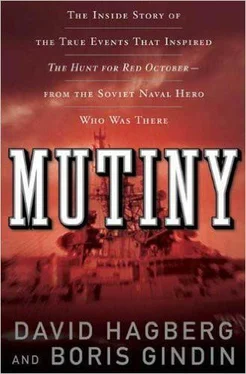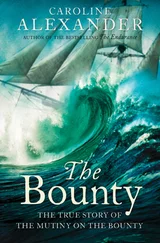“Whatever children need to know will be taught in school, not in church,” the judge ordered.
Catholics and Jews could live quite openly in the Soviet Union, as long as they didn’t preach any of their mumbo jumbo or teach children or try to get out of the country. Valeri Panov, a Jew who was one of the top dancers with the Kirov Ballet in Leningrad, announced one day in 1972 that he wanted to emigrate to Israel. Less than three weeks later he was denounced as a traitor to the Rodina and kicked out of the ballet company, and his wife, a prima ballerina at the Kirov, was demoted and her salary cut.
But that wasn’t the end of it. A couple of months later he was arrested on the street and thrown in jail for two weeks for spitting in public. Less than one week after he was released he was again arrested for spitting and spent another two weeks in a jail for political criminals.
Some dancers in the West tried to send him money, but the KGB put a stop to that, so Panov was out of work and out of money, for which he was subject to arrest again because he was unemployed. Obviously the hapless man was guilty of hooliganism. There was absolutely no way out for him once he had come to the attention of the KGB.
Anyone who got in the way of the KGB was in trouble. It didn’t matter who. It didn’t even matter if you weren’t a Soviet citizen.
Three years before Sablin took over the Storozhevoy, the KGB went after a Danish boat fishing for salmon just forty miles off Sweden’s coast, not even close to Soviet territorial waters, and, coincidentally, 350 miles from Riga.
She was the Windy Luck, her skipper Arne Larsen. Early in the afternoon one of the crewmen spotted a small, open motorboat coming up behind them from the east. Larsen came out on deck as the motor-boat came alongside.
“Sind Sie Kommunists?” the man in the boat shouted in German. Are you Communists?
He was the only person on the boat, and he appeared to be frightened out of his skull and half-delirious with exposure and probably hunger and thirst.
“No, we are a Danish fishing vessel!” Larsen called back. “Where do you come from? What are you doing out here?”
“I’m from Lithuania,” the man explained. “I am defecting to Sweden, but I’m out of food and water and very nearly out of gas, and I’m cold and very tired. Can you help me?”
“Yes, of course!” Larsen shouted down to the man. He motioned for his crew to bring the man aboard and take the motorboat in tow.
“God bless you!” the defector cried. “Are we far from Sweden?”
“Only a few hours,” Larsen assured him.
“I’ve been making my plans for a long time,” the Lithuanian explained. “I thought I had enough gas and food and water to make the crossing. But I ran into a headwind, and the seas were too big, so I was slowed down.” He shook his head. “I would not have made it without you.”
The crew pulled in their nets as Larsen brought the bow of the Windy Luck around to the west on a direct bearing for the Swedish coast and increased power to cruising speed.
Within a half hour a fast-moving ship appeared from astern on the horizon. Larsen added a little more power, but it soon became apparent that the ship chasing them could not be outrun and that he was a warship. As he got closer Larsen identified the ship as a Russian Shershen fast-attack hydrofoil boat, and what’s worse, it was flying a green ensign with the hammer and sickle, which meant it was a KGB coast guard boat.
But these were international waters, so the Russians had no jurisdiction. Larsen did not reduce speed or alter his course, but he ordered the Lithuanian defector to go below and hide in one of the cabins.
Within a half hour the KGB boat pulled alongside the Windy Luck and an officer came out on deck and raised a megaphone. “Heave to!” the officer shouted in Russian.
Larsen ignored the command.
The officer said something to another officer at the open door to the bridge, and within seconds several sailors scrambled out on deck manning a pair of 30mm guns.
Suddenly the KGB patrol boat veered directly into the Windy Luck’s stern, just brushing her with a glancing blow.
“Heave to; we mean to board you,” the Russian officer ordered, this time in English. “If you do not comply we will open fire.”
Larsen threw up his hands. There was nothing he could do. He cut power, and as soon as his boat had slowed down, four Soviet officers armed with pistols scrambled aboard.
“We will search the ship,” one of them told Larsen.
“These are international waters!” Larsen shouted. “You have no rights!”
The officer smirked and nodded toward the KGB warship. “We give the orders here.”
Within five minutes the Lithuanian defector was found and brought up on deck. “Auf Wiedersehen,” he said as he was hustled aboard the KGB ship.
The KGB took the man’s motorboat in tow and within a half hour they were gone over the horizon. Poor bastard, Larsen thought. But at least that’s the end of it for us.
But that wasn’t to be the end of it, because the KGB has not only a long arm; it also has a very long memory.
Three weeks later another Danish fishing vessel, this one the Thomas Moeller, fishing for salmon well within Swedish waters, was rammed by a Soviet warship and nearly sunk. After the collision, the Soviets plowed through the fishing nets and then took off, not bothering to see if there were any injuries or to offer any help.
The incident was a clear warning to all Danish fishermen that trying to help Soviet defectors could be a very risky business.
If Sablin knows these stories and countless others of a similar nature, which he very well may have, he is not deterred as the mooring lines are cut and the engines are engaged.
The Storozhevoy shudders as if he is a racehorse that has thrown off his reins, heading toward a future that no one can predict, except that the KGB will undoubtedly play a major role in how it all turns out.
Sablin looks out the bridge windows, the fog still so thick that he can’t see much of anything beyond the bows. But there are enough buoys marking the safe passage downriver that making it out to the open sea won’t be impossible.
But only if their luck holds.
PART 6
ESCAPE

The problem Sablin faces is that if this business of his fails, he and his crew will either be destroyed at sea or fall into the hands of the KGB. The only hope is to get out into the open sea and send his tape by radio over the public broadcast bands to anybody who will listen. At that point their fate will rest in the hands of the people.
He signals for all ahead slow, and almost immediately the two marching engines spool up and the Storozhevoy begins to move.
Seaman Oleg Maksimenko is standing by at the navigation radar to help them pick their way downriver in the fog. But first they have to get out of the tight spot they are in, wedged between the Alpha submarine and a frigate, plus all the other warships and tenders at anchor or on moorings downriver. The tide is running out now, giving them a 6-knot boost in speed in return for taking away some of their maneuverability.
Petty Officer First Class Viktor Soloviev is steering the ship, and although he’s the best helmsman aboard, he is extremely nervous. All of them are a hairbreadth away from disaster, and he more than anyone else aboard knows it. A collision with another boat under these conditions is almost certain.
Читать дальше













